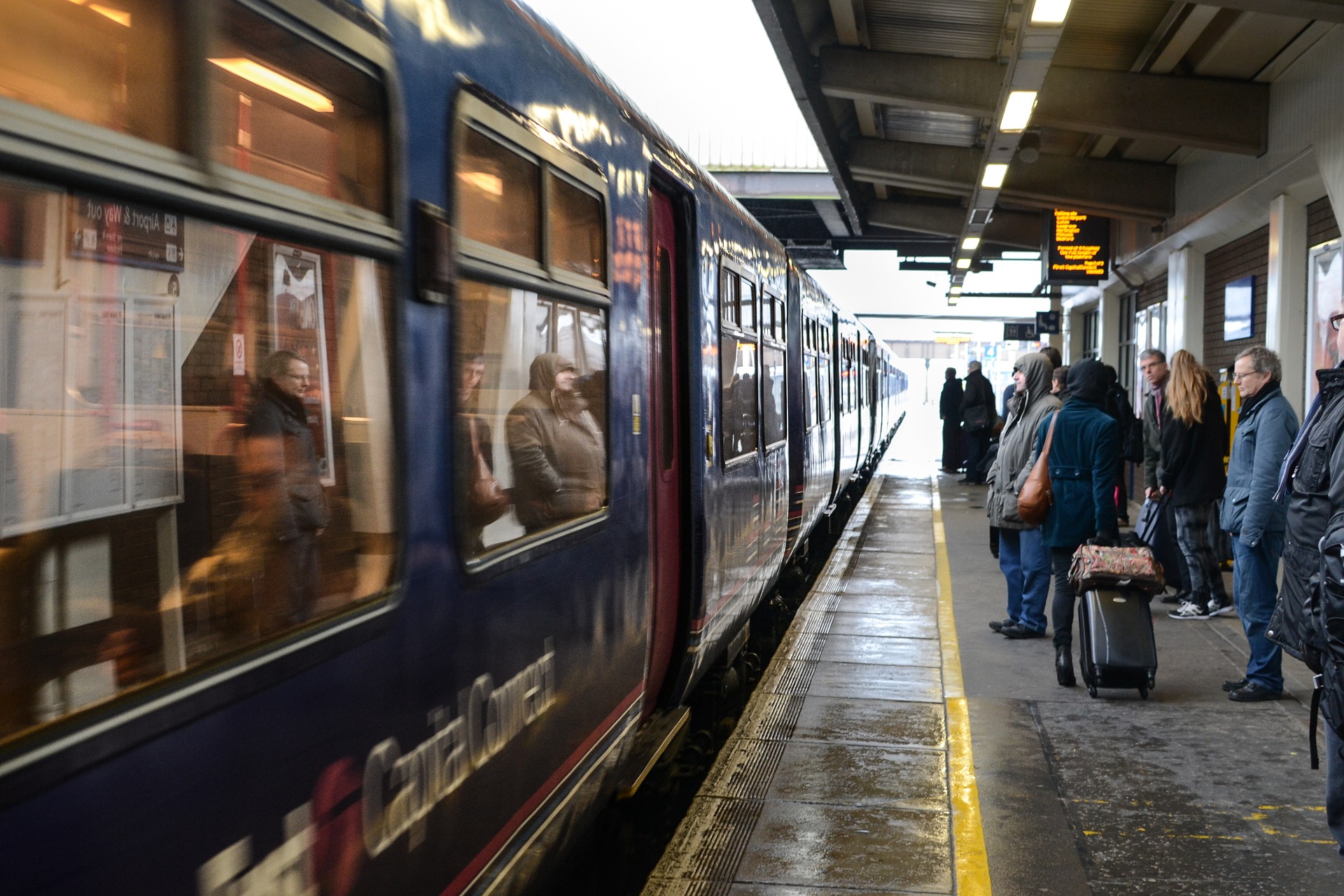Simulating passenger movement at the Platform Train interface to understand the impact of station design on dwell time

The RateSetter modelling tool, which was developed by the University of Sheffield with funding from RSSB, has been used to understand the causes and possible solutions to poor dwell adherence on a congested platform, as part of a Network Rail case study.
RateSetter, an agent-based microsimulation of passenger movement at the Platform Train Interface (PTI) based on an Optimal Reciprocal Collision Avoidance (ORCA) model, was applied to a station in South London. Factors, such as platform curvature, step distance and platform furniture were considered.
The modelling identified three options for achieving reduced dwell times (i) a new staircase to the platform close to the existing stairs, (ii) better distribution of passengers along the platform to better use the existing space, and (iii) a hypothetical additional staircase at the opposite end of the platform.
Simulations with a uniform passenger boarding distribution along the platform showed a 24% median PTI flow time reduction for eight carriage trains and a 14% reduction for five carriage trains. Altering the proportion of people who uniformly distribute showed that the reduction in dwell is roughly linearly proportional to the extent of passenger adherence to the uniform distribution i.e. the benefits can be realised without full adherence to a uniform boarding distribution.
Introduction of an additional set of stairs 10 meters along the platform provided no improvement to PTI flow times for five carriage trains. There was a reduction of around 15% in median PTI flow time for the eight carriage trains when accounting for modification of boarding passenger distribution produced by the stairs. However, these improvements were accompanied by an increase in PTI flow time variability.
The findings, which could provide insights into other stations, showed that an additional set of stairs at the far end of the platform (relative to the existing stairs) resulted in a significant improvement of PTI times. This has the potential to reduce median PTI times by 29% and 34% for five and eight carriage trains respectively.
November 2022
Back



